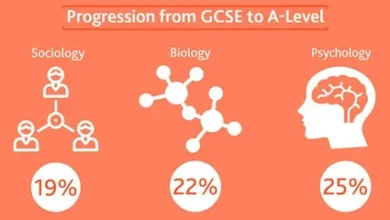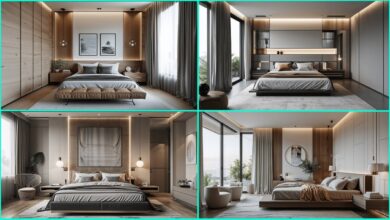Modern Shopify Store Design for Maximum Conversions

The design of your store plays a crucial role in converting visitors into loyal customers. A modern, well-optimized Shopify store not only attracts traffic but also ensures that potential buyers follow through with their purchases.
In this article, we’ll explore how to design a modern Shopify store that maximizes conversions, covering user experience, essential design elements, trust-building strategies, and advanced features that boost sales.
1. Understanding Conversion-Driven Design
Before diving into specific design elements, it’s important to understand what makes a Shopify website design conversion-friendly. A well-structured store prioritizes user experience (UX) and user interface (UI) to ensure seamless navigation, easy product discovery, and an effortless checkout process.
The Role of UX/UI in Shopify Design
- User Experience (UX): Focuses on creating a frictionless shopping journey, from landing pages to checkout.
- User Interface (UI): Includes elements like color schemes, typography, and layout that enhance visual appeal and engagement.
Mobile-First Approach
With a significant percentage of online shoppers using mobile devices, optimizing your Shopify store for mobile is non-negotiable. A responsive design ensures that your store looks and functions seamlessly across all screen sizes.
2. Essential Elements of a High-Converting Shopify Store
A. Clean & Intuitive Navigation
A cluttered website can overwhelm visitors, leading to higher bounce rates. A modern Shopify store should feature a clean, intuitive navigation system, allowing customers to find products easily.
Best Practices:
- Use a simple and structured menu.
- Implement a sticky header for easy access to categories.
- Enable a powerful search bar with autocomplete features.
B. High-Quality Visuals & Branding
Visual appeal directly impacts user engagement and trust. Invest in professional product photography, videos, and a cohesive brand identity.
Key Considerations:
- Use high-resolution product images with zoom features.
- Incorporate lifestyle images that showcase products in real-world settings.
- Maintain a consistent color palette and typography for brand recognition.
C. Fast Loading Speed & Performance
Site speed significantly affects conversions. A slow website can frustrate users, leading them to abandon their carts.
Optimization Tips:
- Compress images without sacrificing quality.
- Use a fast and lightweight Shopify theme.
- Minimize the use of excessive apps and plugins.
D. Mobile Responsiveness & Optimization
Ensuring your store provides a seamless mobile experience is crucial for maximizing conversions.
Best Practices:
- Use large, tappable buttons for easy navigation.
- Optimize checkout forms for mobile users.
- Test your store on different devices to ensure functionality.
3. Designing for Trust & Credibility
A. Clear Call-to-Action (CTA) Buttons
A strong CTA directs visitors toward taking action, whether it’s making a purchase or signing up for a newsletter.
CTA Optimization Tips:
- Use action-oriented text like “Buy Now,” “Get Yours Today,” or “Limited Offer.”
- Ensure CTAs stand out with contrasting colors.
- Place CTAs strategically, such as above the fold and near product descriptions.
B. Social Proof & Reviews
Shoppers rely on reviews and testimonials before making a purchase decision. Displaying social proof can boost credibility and encourage conversions.
Ways to Showcase Social Proof:
- Enable customer reviews and ratings on product pages.
- Display user-generated content, such as customer photos.
- Highlight testimonials and case studies.
C. Secure & Transparent Checkout Process
A complicated or untrustworthy checkout process can lead to cart abandonment.
Improving Checkout Experience:
- Offer multiple payment options, including digital wallets.
- Display security badges (SSL certification, secure payment logos).
- Minimize form fields to reduce friction.
4. Enhancing Conversions with Advanced Features
A. Personalization & AI Recommendations
Personalized shopping experiences increase engagement and sales.
How to Implement Personalization:
- Use AI-driven product recommendations (e.g., “You may also like”).
- Send personalized email offers based on browsing history.
- Implement dynamic pricing and discounts based on user behavior.
B. Exit-Intent Popups & Lead Capture Forms
Exit-intent popups help recover lost sales by capturing leads before users leave your site.
Effective Strategies:
- Offer discount codes or free shipping in exchange for an email subscription.
- Provide an interactive quiz or survey to engage visitors.
- Use scarcity tactics (e.g., “Limited Stock Remaining!”).
C. A/B Testing & Analytics for Continuous Improvement
To refine your Shopify store’s design, leverage A/B testing and analytics.
Tools & Techniques:
- Use Google Analytics and Shopify’s built-in reports to track user behavior.
- Test different layouts, CTA placements, and product page designs.
- Regularly analyze conversion rates and optimize accordingly.
Designing a modern Shopify website design that maximizes conversions requires a strategic approach. By prioritizing clean navigation, high-quality visuals, fast loading speeds, mobile optimization, and trust-building elements, you can create a seamless shopping experience that turns visitors into loyal customers. Implement advanced features like AI-driven recommendations and exit-intent popups to further boost conversions.
A well-designed Shopify store is not just about aesthetics—it’s about enhancing user experience, building trust, and driving sales. Take action today and optimize your Shopify store to achieve long-term success in the eCommerce world.


